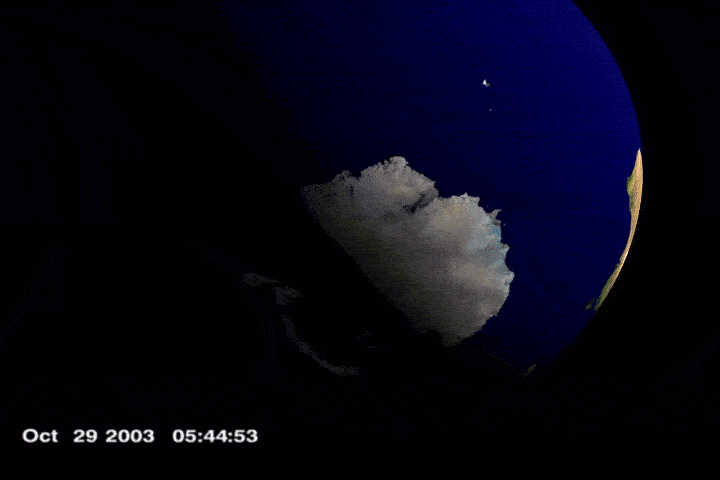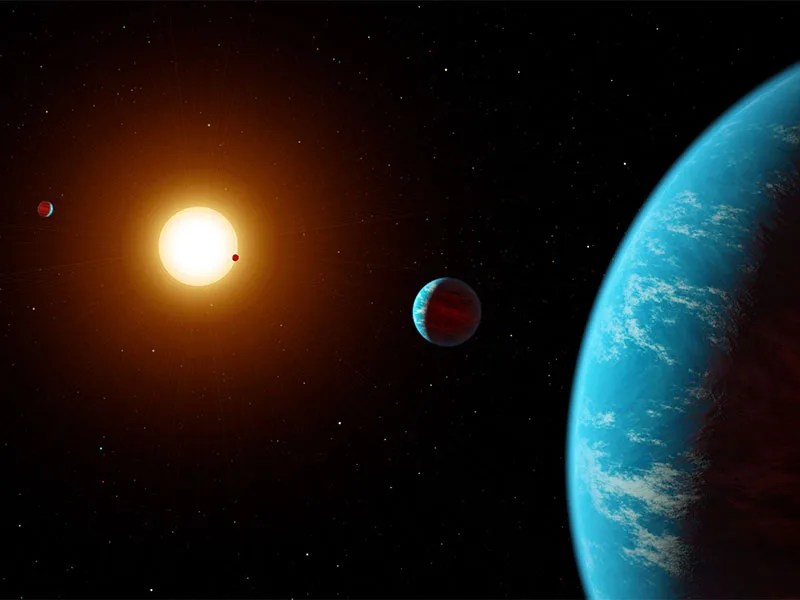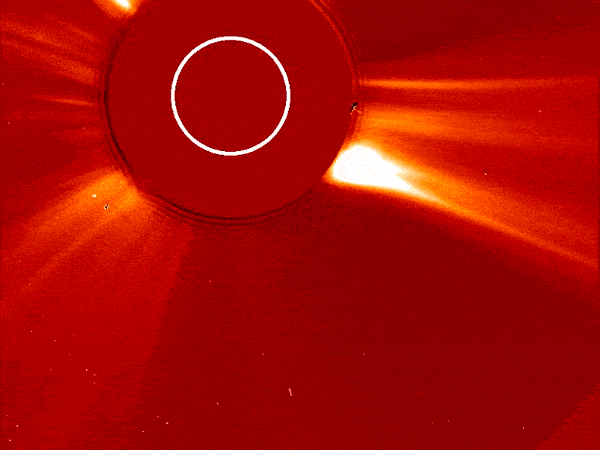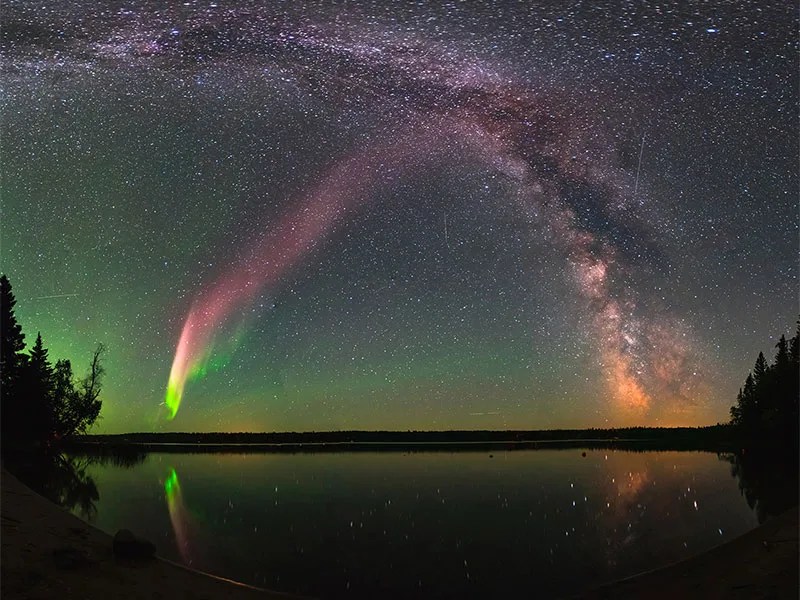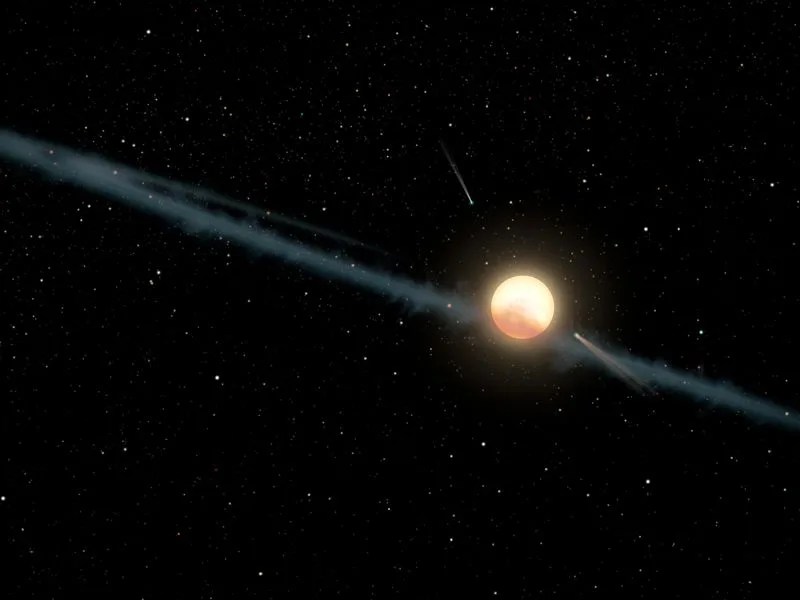Five Extraordinary Citizen Science Discoveries
1. Lost (and Found) in Space
In January 2018, amateur astronomer Scott Tilley contacted NASA with a remarkable message: He believed he had found a lost spacecraft. Tilley had made contact with a NASA satellite called Imager for Magnetopause-to-Aurora Global Exploration (IMAGE). IMAGE launched in 2000, but contact was unexpectedly lost on Dec. 18, 2005. NASA’s Goddard Space Flight Center in Greenbelt, Maryland, acquired time on the Deep Space Network to focus on the source and determine whether the signal was indeed IMAGE. The Johns Hopkins Applied Physics Lab in Laurel, Maryland, successfully collected telemetry data from the satellite, and sure enough, the signal showed that the spacecraft ID was 166 -- the designation for IMAGE.
The NASA team was able to read some basic housekeeping data from the spacecraft, suggesting that at least the main control system was operational. In the following weeks, however, the radio signal began weakening in a sputtering pattern consistent with the spacecraft’s last known spin period. It is possible that IMAGE’s spin axis had drifted to an orientation where the antenna’s signal was reaching Earth during part of its rotational period, which would explain the dropout pattern observed.
On Feb. 22, 2018, the signal from IMAGE began to break up and has been silent since Feb. 24. The team continues to assess what may be the issue, but it is known that this episode does not mimic the sudden silence that occurred in 2005 — when contact was originally lost with the spacecraft. The team continues to make preparations to attempt to bring the control systems back online should communications with IMAGE be re-established.
2. Whole New Worlds
A system of at least five exoplanets was discovered in 2017 by citizen scientists using data from NASA's Kepler space telescope. Kepler trails behind Earth, measuring the brightness of stars that may potentially host exoplanets — planets outside of our solar system. This was the first multiplanet system discovered entirely through crowdsourcing, organized through a project called Exoplanet Explorers, part of the online platform Zooniverse.
A study describing the system has been accepted for publication in The Astronomical Journal. Thousands of citizen scientists got to work on Kepler data in 2017 when Exoplanet Explorers launched. It was featured on a program called Stargazing Live on the Australia Broadcasting Corporation. On the final night of the three-day program, researchers announced the discovery of a four-planet system. Since then, they have named it K2-138 and determined that it has a fifth planet -- and perhaps even a sixth, according to the new paper.
Another batch of 2017 Kepler data was recently uploaded to Exoplanet Explorers for citizen scientists to search through. Astronomers have yet to search through most of it for planets.
3. Comet-o-Rama
For more than 22 years, the Solar and Heliospheric Observatory (SOHO) has been keeping an eye on the Sun from space. SOHO is the longest-lived heliophysics mission, and has provided a nearly continuous record of solar phenomena over a full magnetic cycle (two 11-year sunspot cycles). But SOHO has another claim to fame: Drawing on help from citizen scientists around the world, SOHO has become the single greatest comet finder of all time. Since it launched on Dec. 2, 1995, SOHO has more than doubled the number of comets for which orbits have been determined over the last 300 years.
Of course, it is not SOHO itself that discovers the comets — that is the province of the dozens of amateur astronomer volunteers who daily pore over the fuzzy lights dancing across the pictures produced by SOHO's Large Angle and Spectrometric Coronagraph cameras. As of late 2017, more than 3,400 comets have been found by SOHO, most of them by amateurs accessing SOHO real-time data via the Internet.
4. There’s a Mysterious Purple Light in the Sky -- It’s Named Steve
There were normal auroras — entrancing light shows in the sky caused by charged particles from the Sun interacting with Earth's magnetic field — and then there were the thin purple ribbons of light no one could explain. From 2015 to 2016, citizen scientists shared 30 reports of these mysterious lights in online forums and with a team of scientists that run a project called Aurorasaurus.
The citizen science project, funded by NASA and the National Science Foundation, tracks the aurora borealis through user-submitted reports and tweets. The Aurorasaurus team, led by Liz MacDonald, a space scientist at NASA Goddard, conferred to determine the causes of this phenomenon. MacDonald and her colleagues talked with amateur photographers in a Facebook group called Alberta Aurora Chasers.
The group nicknamed the phenomenon “Steve,” and it stuck. But people still didn't know what they were seeing. In July 2016 scientists caught a break. One night, amateur observers saw Steve at the same time that a network of ground-based cameras were watching the sky, and the European Space Agency’s Swarm satellite just happened to be passing over the exact area. The combined views from the ground and space helped researchers learn that, despite its ordinary name, Steve may be an extraordinary puzzle piece in our understanding of how Earth's magnetic fields interact with charged particles in space. The findings are published in a study recently published in Science Advances.
As for the name "Steve" given by the citizen scientists? The team is keeping it as an homage to its initial name and discoverers. But now it is STEVE, short for Strong Thermal Emission Velocity Enhancement.
5. A “Bizarre” Star Yields Some of Its Secrets
Tabby's Star is one of the most unusual stellar objects known. Also called KIC 8462852, or Boyajian's Star, the object experiences unusual dips in brightness — NASA's Kepler space telescope even observed dimming of up to 20 percent over a matter of days. In addition, the star has had much subtler but longer-term enigmatic dimming trends. This behavior is unexpected for normal stars like this one, which is slightly more massive than the Sun.
Speculations have included the idea that the star swallowed a planet, that it’s unstable, and even a more imaginative theory involving a giant contraption or "megastructure" built by an advanced civilization, which could be harvesting energy from the star and causing its brightness to decrease. Citizen scientists have had an integral part in exploring Tabby's Star since its discovery.
Light from this object was first identified as "bizarre" and "interesting" by participants in the Planet Hunters project, which allows anyone to search for planets in the Kepler data. A recent study using NASA's Spitzer and Swift missions, as well as the Belgian AstroLAB IRIS observatory, suggests that the cause of the dimming over long periods is likely an uneven dust cloud moving around the star. In addition, recent work on long-period dimming involves amateur astronomers who provide technical and software support to AstroLAB. Astronomers — professional and amateur alike -- will likely be studying the enigmatic object for years to come.
By Bill Dunford



























